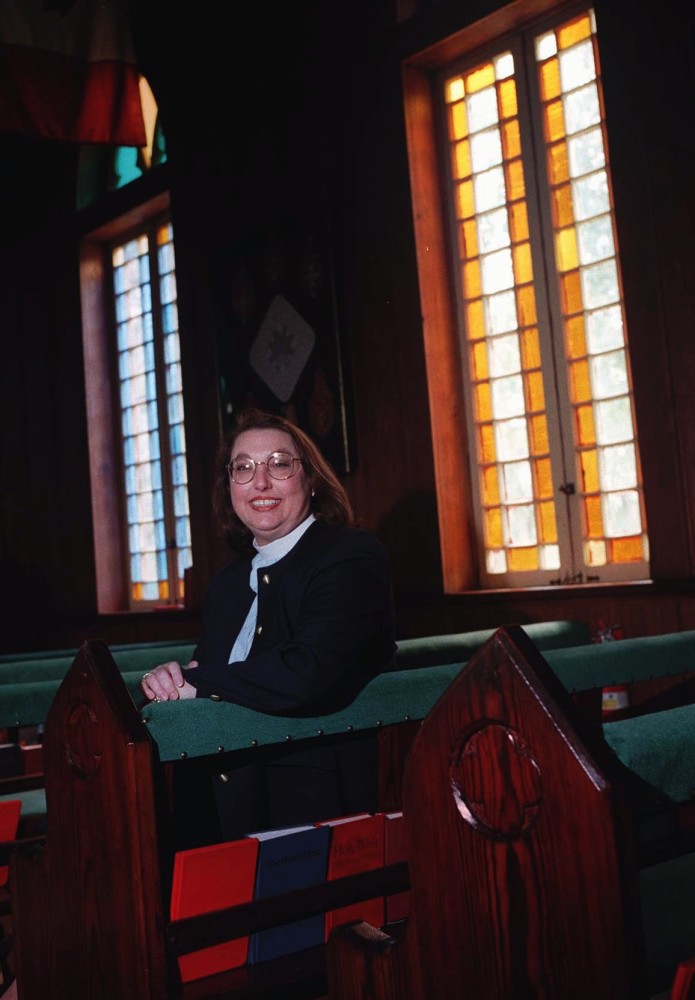By Elizabeth Eisenstadt-Evans
The Philadelphia Inquirer.
On a recent Saturday at North Philadelphia, Pa.’s, landmark Episcopal Church of the Advocate, worshipper gathered in a jubilant, crowded service to mark the 40th anniversary of the ordination of women as priests.
It is not too fanciful to imagine that the dead were gently jostling the living.
Some of the chief actors in that act of ecclesiastical defiance against a tradition-loving church are gone, though many of those still alive participated in the day of talk, fellowship, and worship celebrating the ordination of 11 women.
On that steamy day 40 years ago, the late Rev. Paul Washington, legendary civil rights advocate and rector of Advocate, was greeted with tumultuous applause when he introduced the service by famously saying:
“Now is the time! What is a mother to do when the doctor says, ‘Your baby will be born on Aug. 10,’ when on July 29 she has reached the last stages of labor and the water sac has ruptured?”
Departed also is the Rev. Robert DeWitt, then the retired Episcopal bishop of the Diocese of Pennsylvania, whose work on behalf of racial reconciliation (including the subject of reparations) had alienated some of his flock.
In showing up at the church that morning, DeWitt defied Bishop Lyman Ogilvy’s wish that he (and two other retired bishops) not take part in a service not sanctioned by the denomination.
Three of the women clergy (one was in her 70s at the time of her ordination) are also gone.
But those who participated or attended the recent service, recall the drama of the day vividly, a Philadelphia story with memorable characters and white collars instead of white gloves.
“It was highly controversial,” recalls Barbara Harris, one of the women ordained that day. “The church was packed, it was a sweltering day, and there was the threat of violence against the ordinands.”
Then a lay leader at the Advocate, she carried the processional cross in the service and went on to become the Episcopal Church’s first female bishop.
Currently heading the Diocese of Pennsylvania, Clifton Daniel III, then a young priest, had traveled to Pennsylvania that day to support a seminary classmate, Nancy Hatch Wittig.
He had been challenged by one of his seminary professors to consider being part of the ceremony that ordained Wittig, and he was.
“This was not (just) a Sunday service in the middle of the July,” Daniel said recently. “This was a heated, dramatic moment and life would be very different after it.”
That was certainly true in the case of the Rev. George Rutler, who attended the service, and who, along with several others, spoke in opposition to the ordination.
“As I recall, the several speakers delivered their remarks calmly and with little rhetorical flourish,” Rutler recently said in an e-mail. “Nonetheless, there were catcalls and attempts to shout down the speakers.”
He added, “All in all, it was most edifying and clearly an indication that the once stately and rational Episcopal Church had been replaced by something far less than what had been.”
Several years later, Rutler, the rector of Rosemont’s Church of Good Shepherd, was to become a Roman Catholic priest.
Two years after the controversial ceremony, bishops, clergy, and laity voted in favor not only of regularizing those ordinations, but also of allowing women into the priestly ordination process.
Now, more than a third of Episcopal clergy are women, according to 2012 figures collated by the Church Pension Group.
The vast majority of those who disapproved, like Rutler, have left for other denominations, or for the celestial realms.
“My sense of today is that people have a hard time believing that this was such a big deal,” says the Rev. Carter Heyward, one of the women who presented themselves for ordination that day and who is now a retired professor of theology at the Episcopal Divinity School, in Philadelphia.
“The optimism and headiness, the feeling that we were going to change the world, doesn’t seem to be present now,” she adds.
The Rev. Don Graff, now a retired priest who supported the ordination of women but did not approve of the actions of the three retired bishops who performed the ceremony in 1974, says he can’t imagine such an event happening today.
“It was a different time,” says Wittig, but added that the actions taken July 29, 1974, by the 11 women and the bishops had “opened a window (in the church) through which fresh air could flow.”
Instead of facing revolt within, the Episcopal Church and her mainline sisters (as well as, to a significant extent, the Catholic Church and many conservative bodies) currently confront a perhaps a more insidious threat, a society in which fewer find the church’s voice on issues of evangelism and justice engaging, or even particularly relevant.
In a recent survey by Carnegie Mellon’s Integrated Innovation Institute, for example, only 52 percent of millennials said they look to religion for guidance (though, interestingly enough, a higher percentage, 62 percent, say they talk to God).
How, and whether, Episcopalians respond to today’s more subtle and perhaps more difficult challenges may determine the lasting effect of the ordinations that once shook, divided, and inspired so many.
One thing is for sure, in a relatively short amount of time, it has become impossible to imagine the Episcopal Church without ordained women leaders. That, in itself, may be legacy enough.














































































































































































































































































































































































